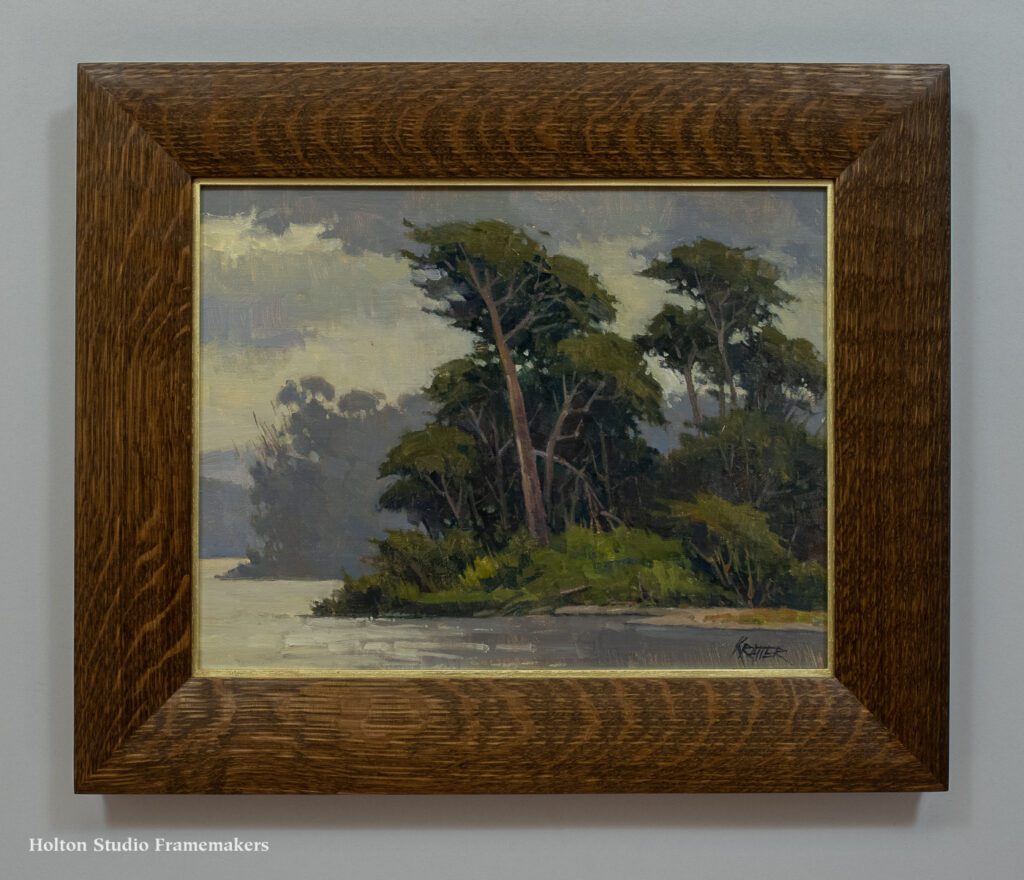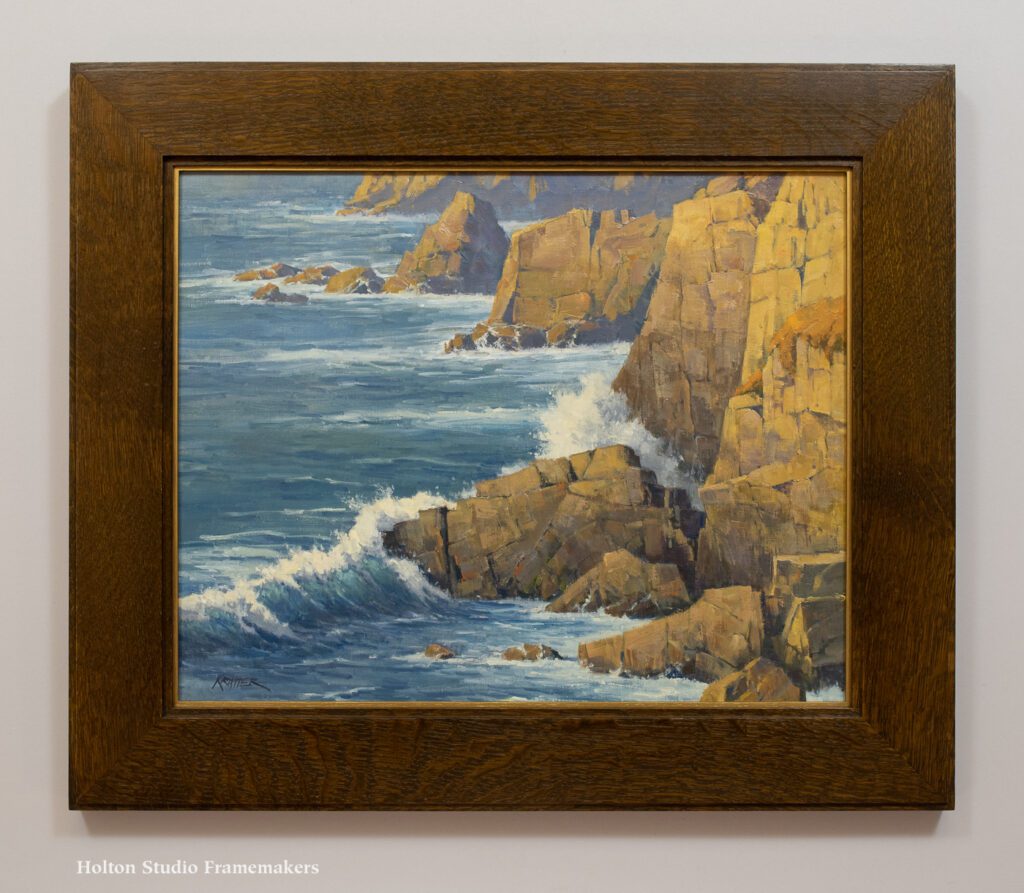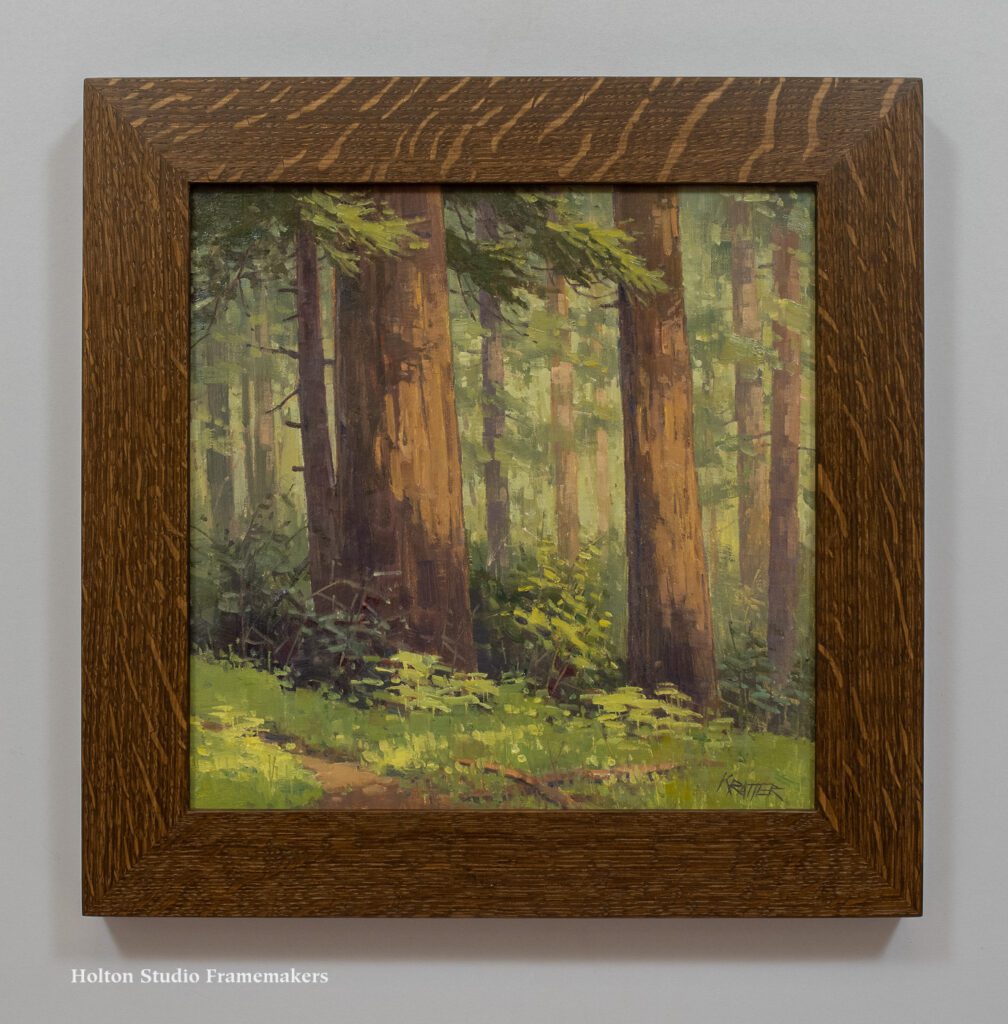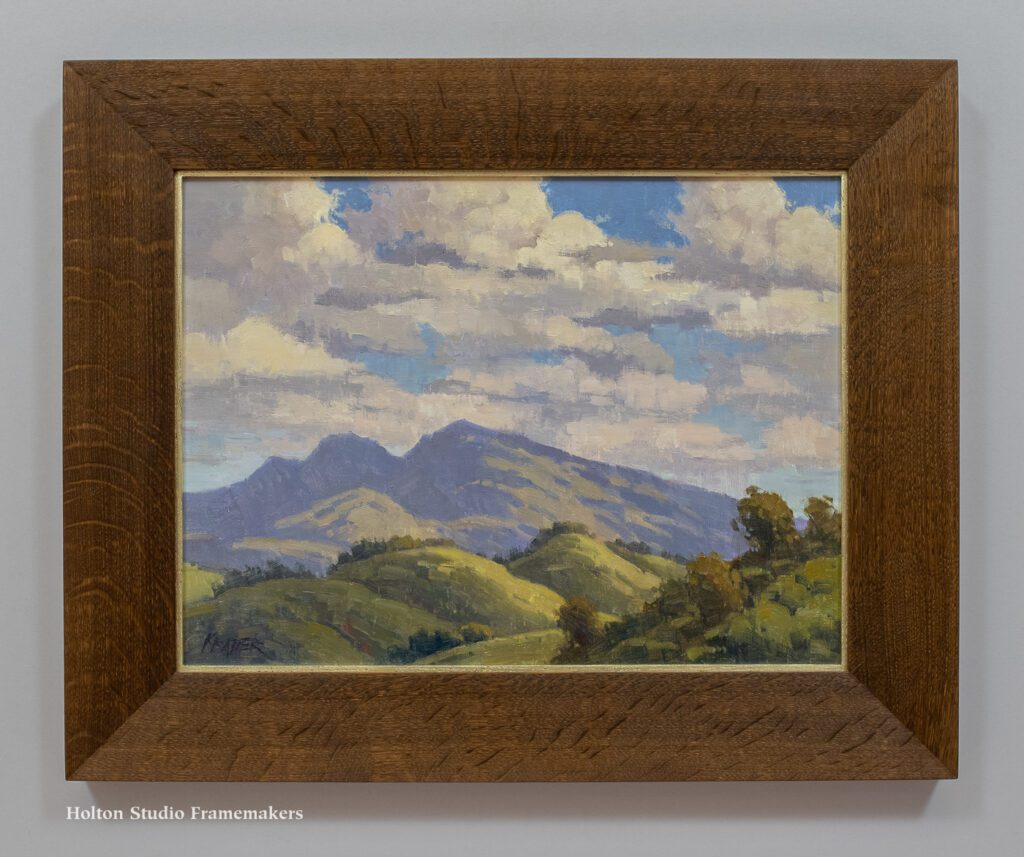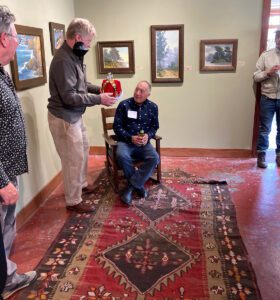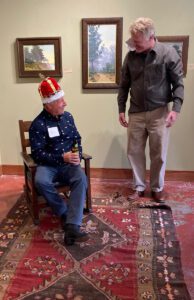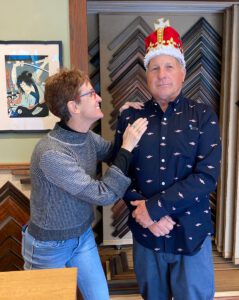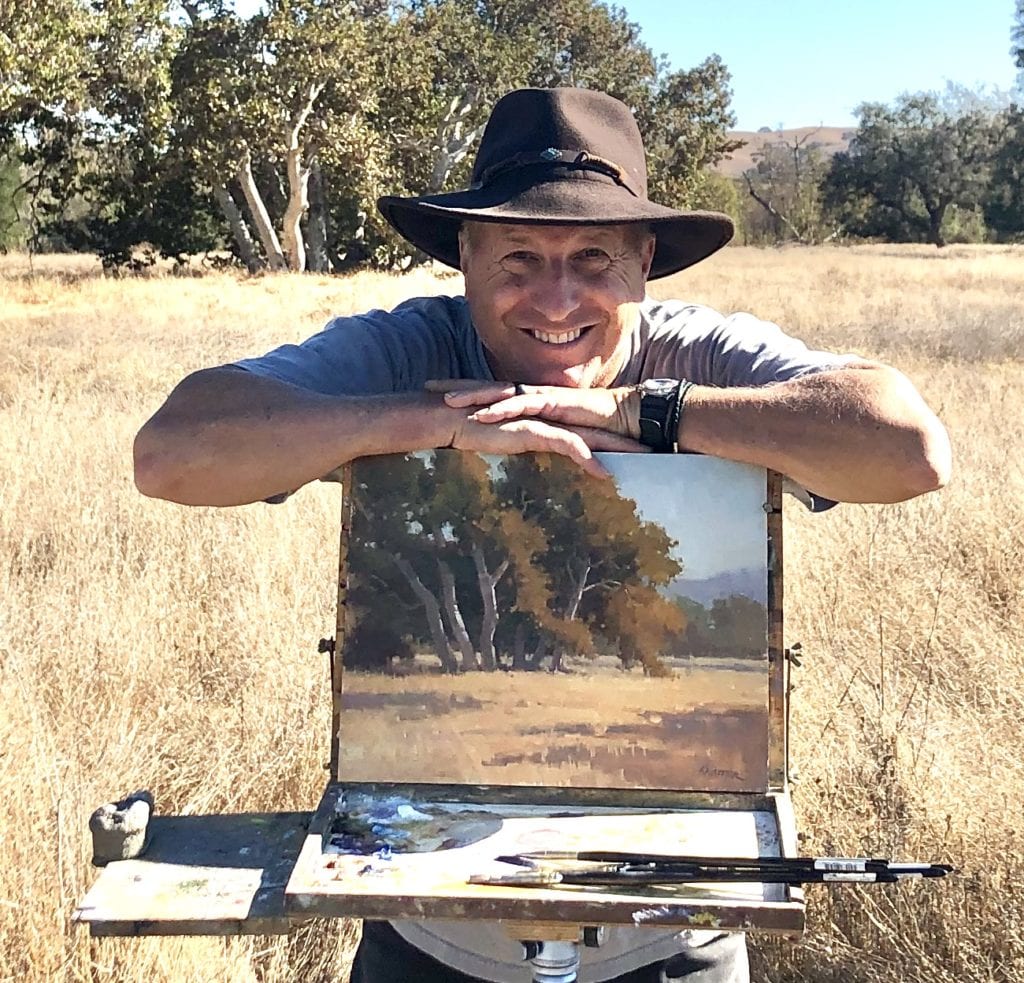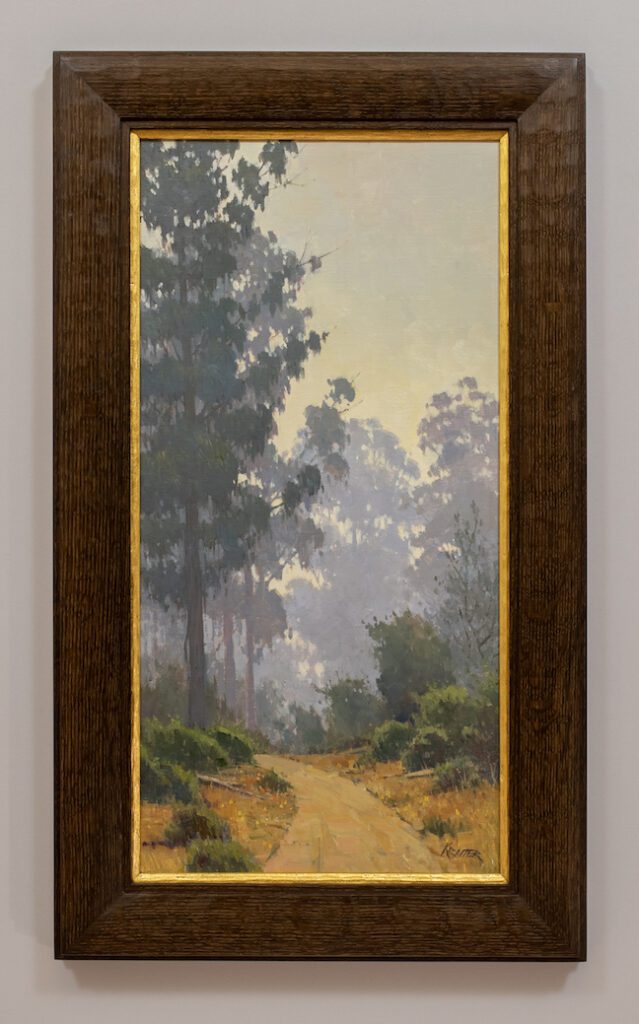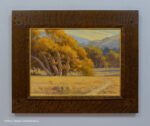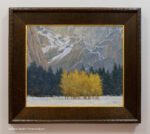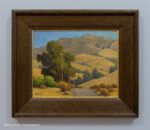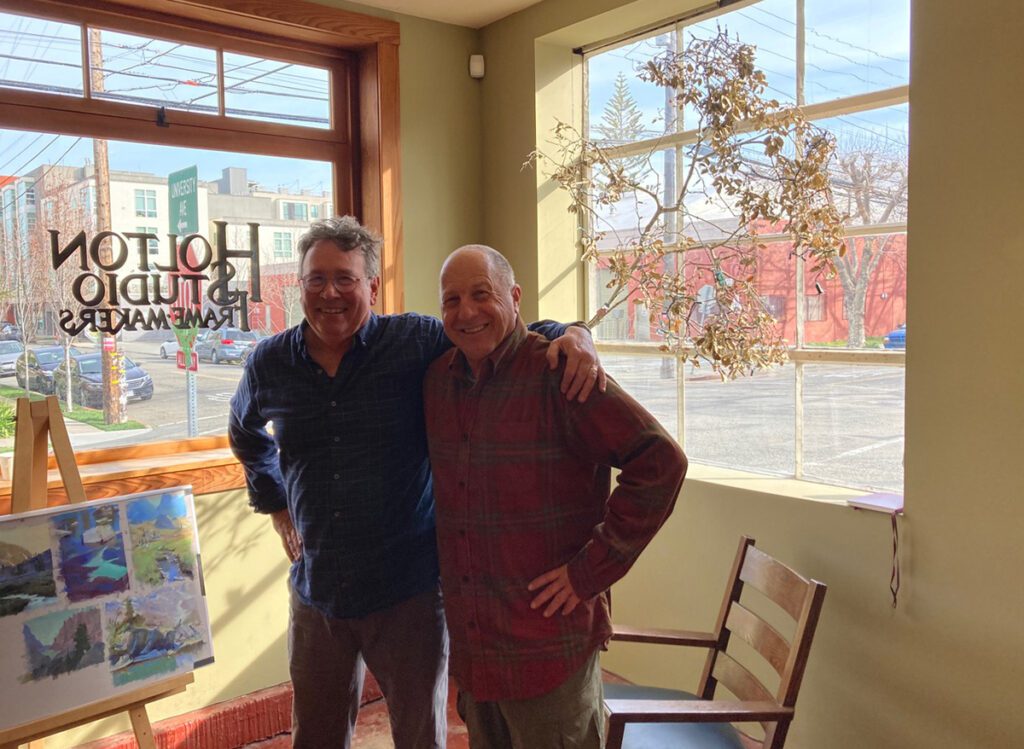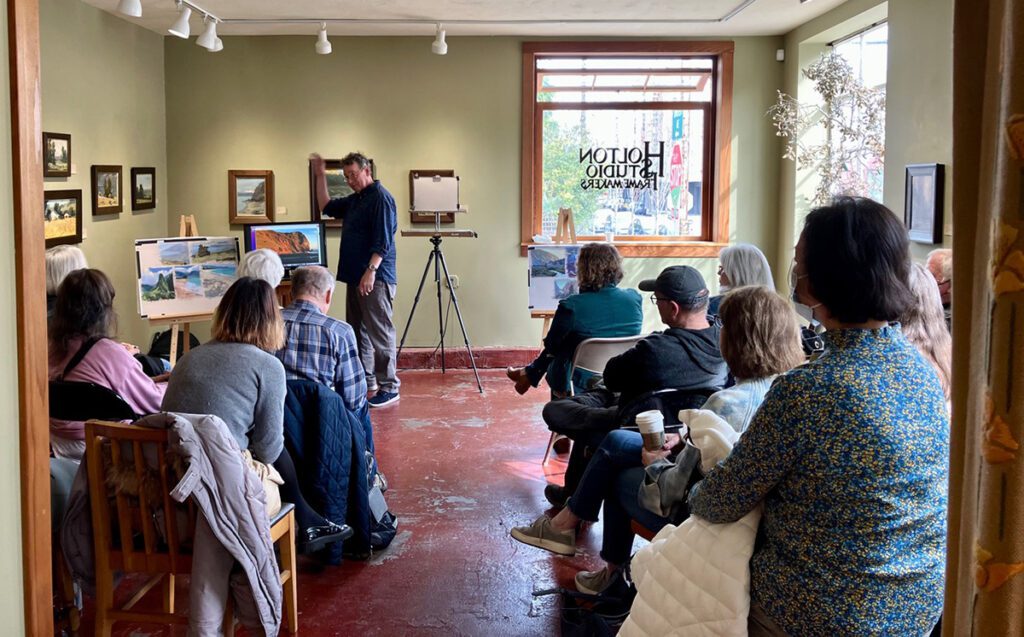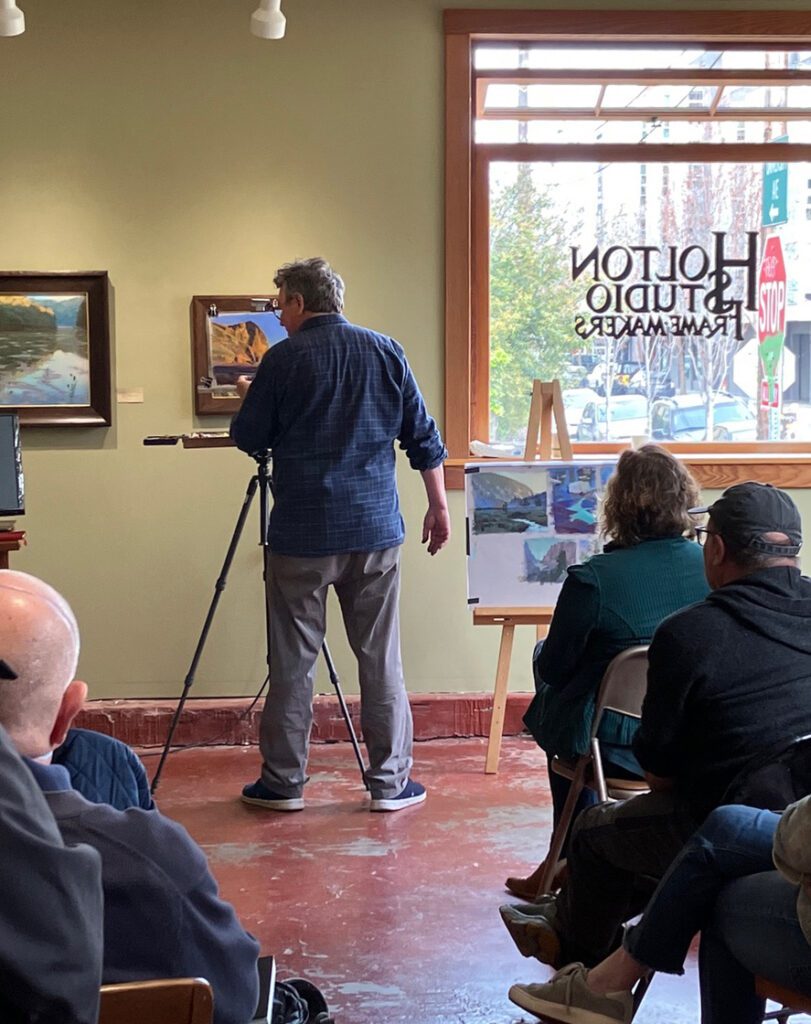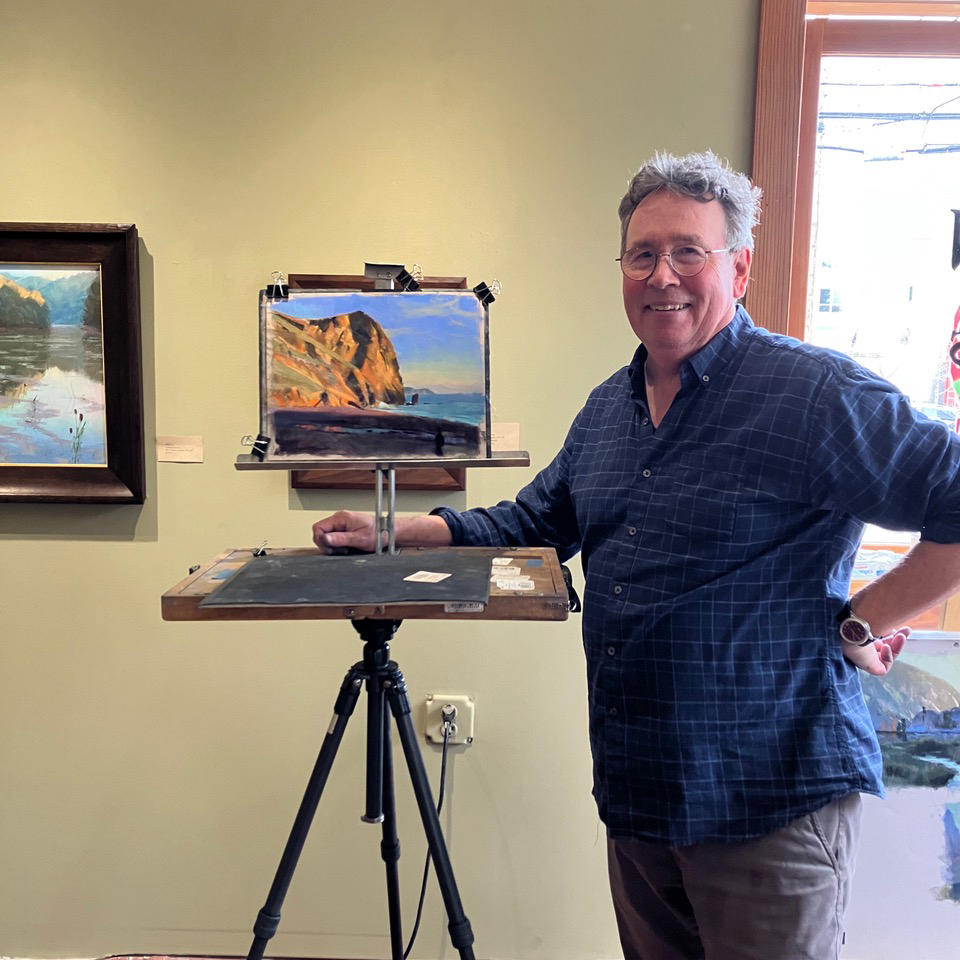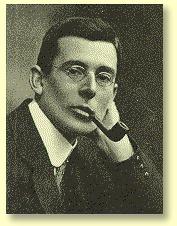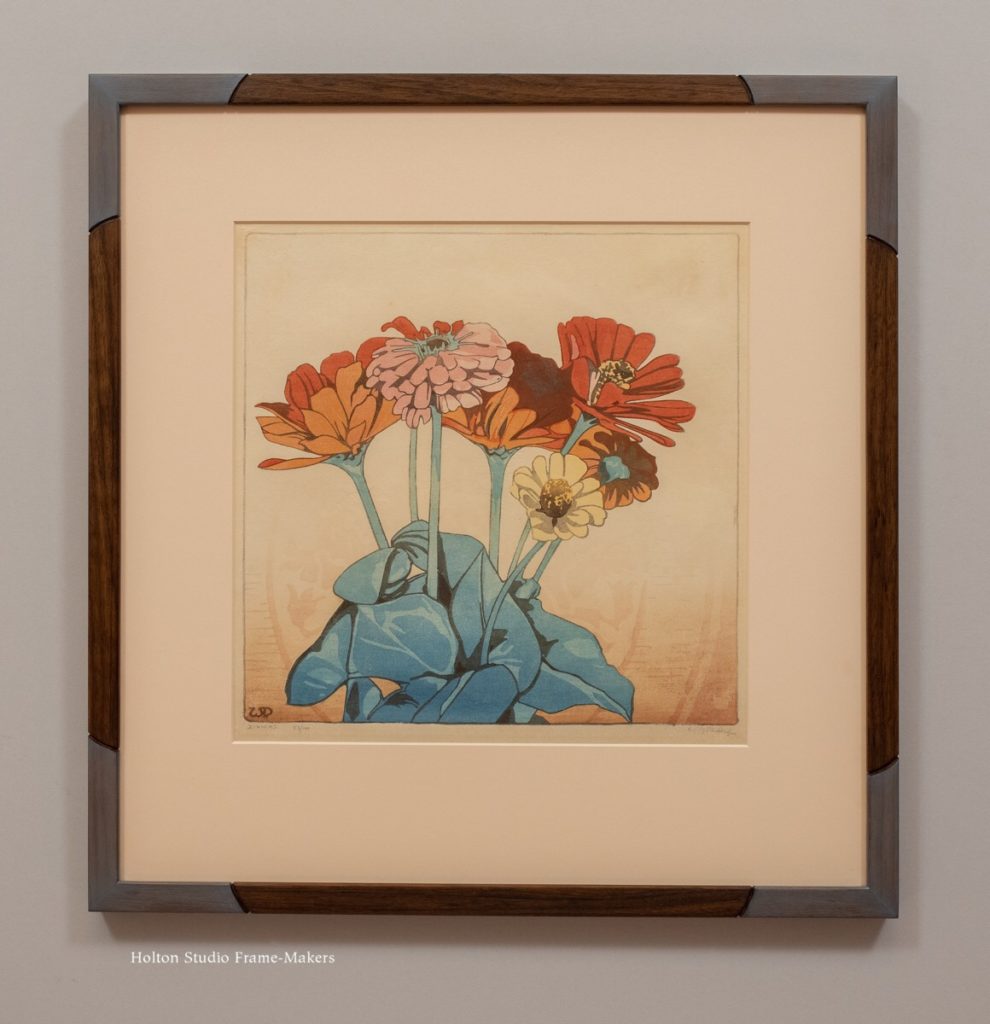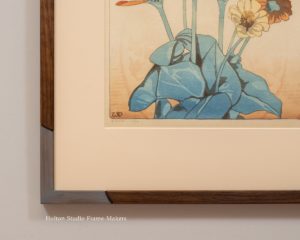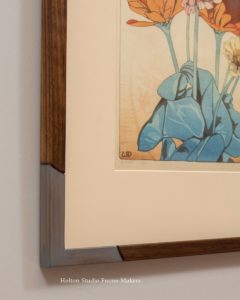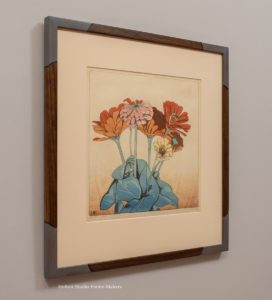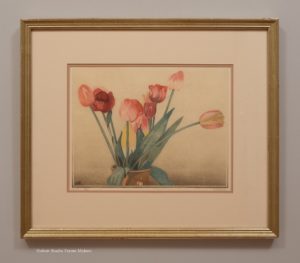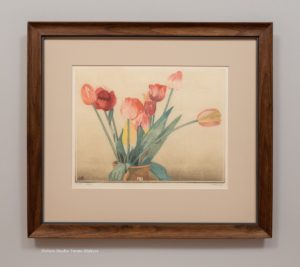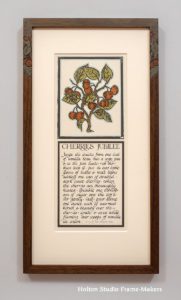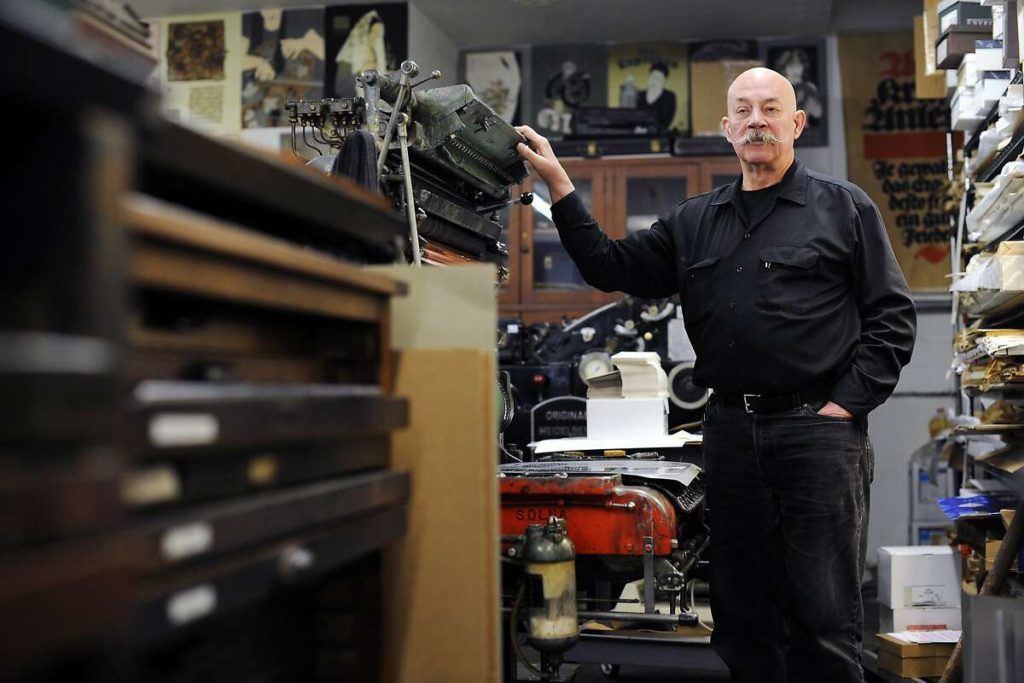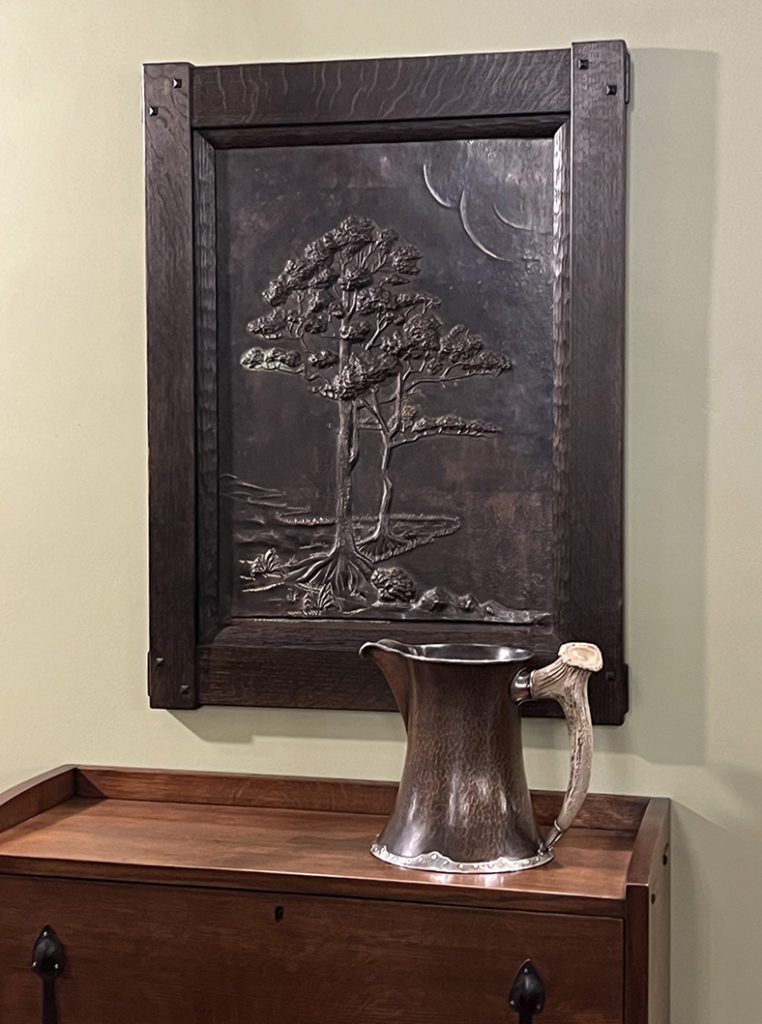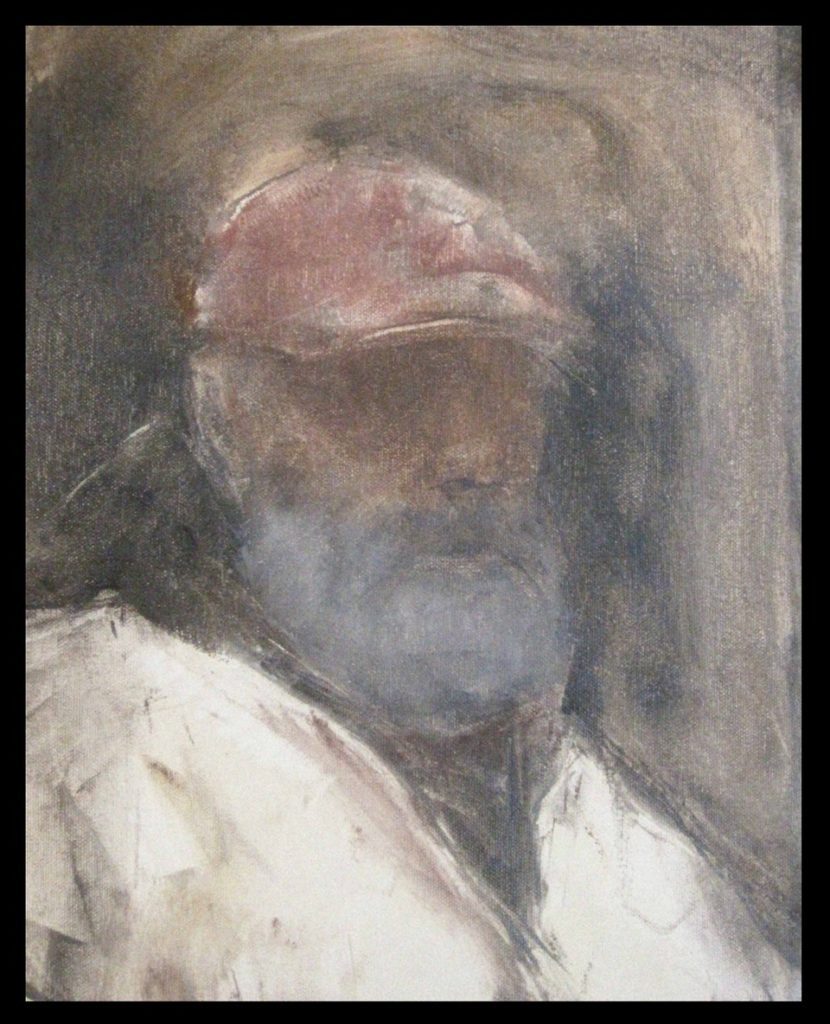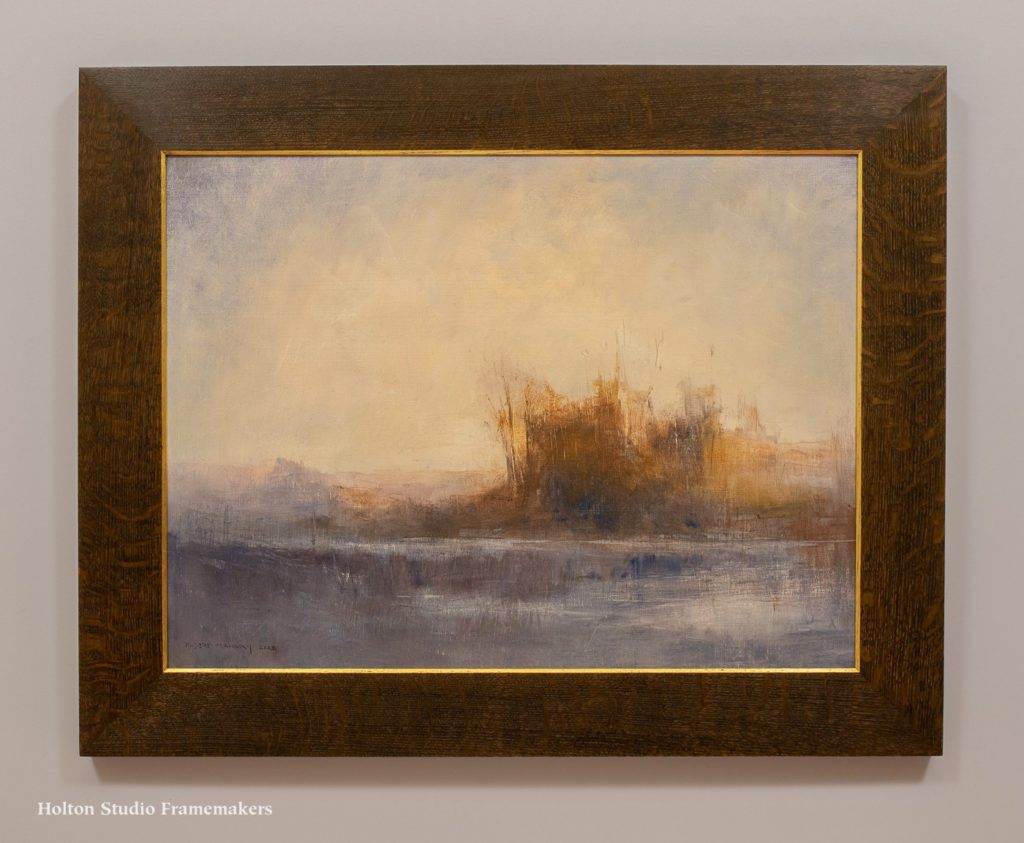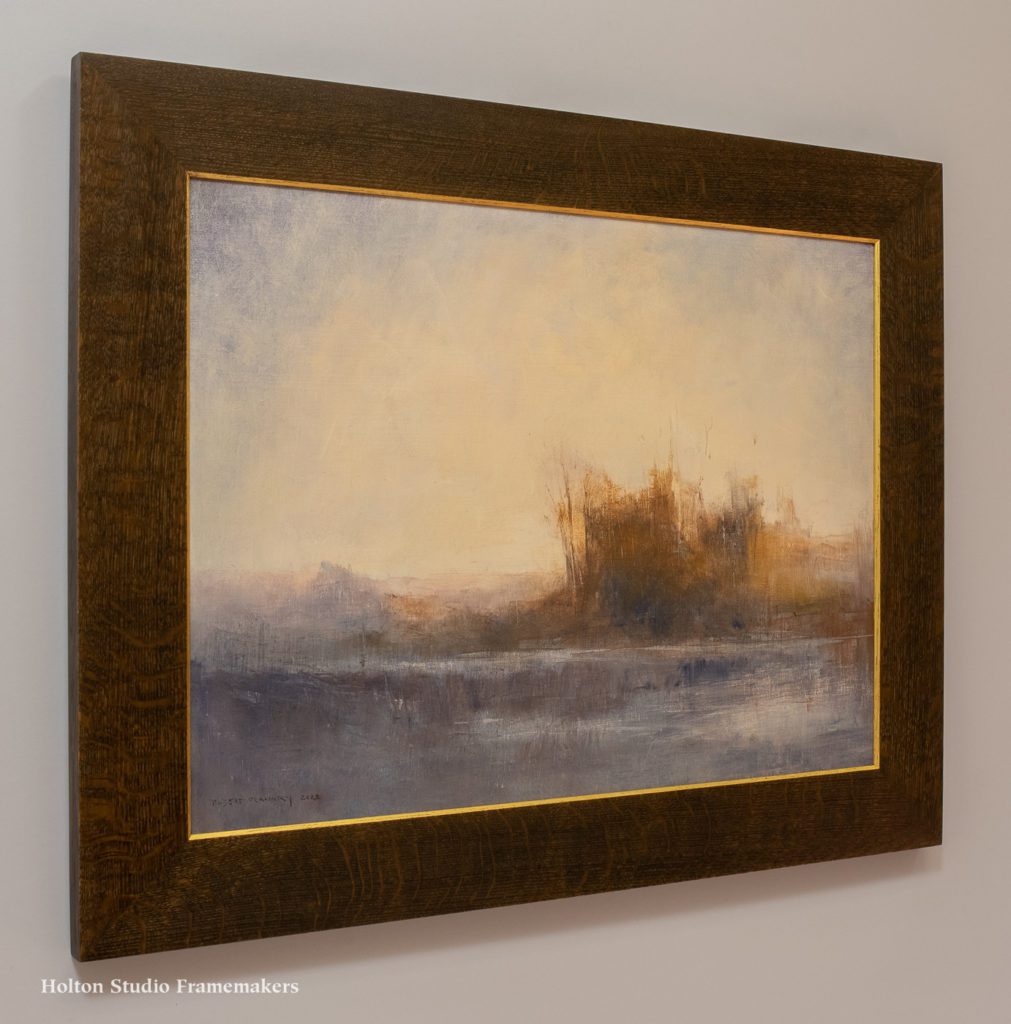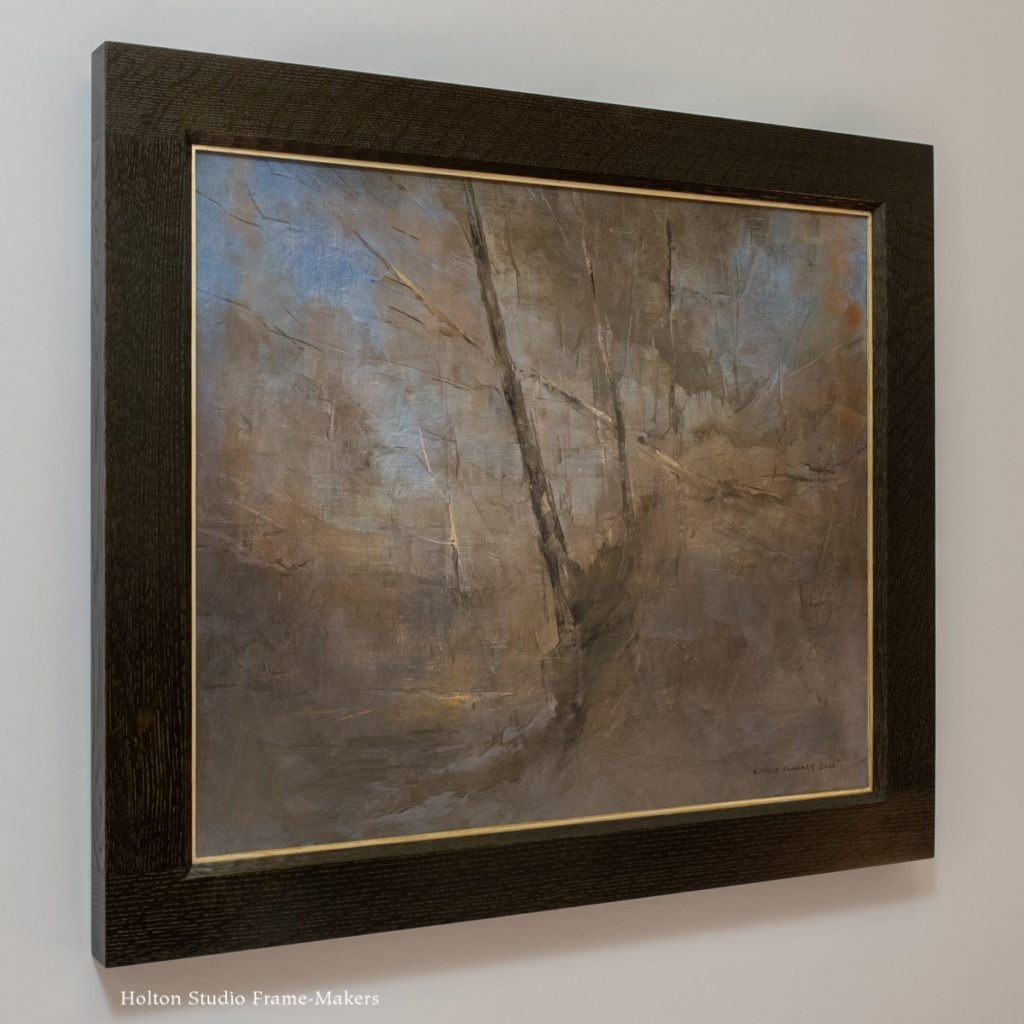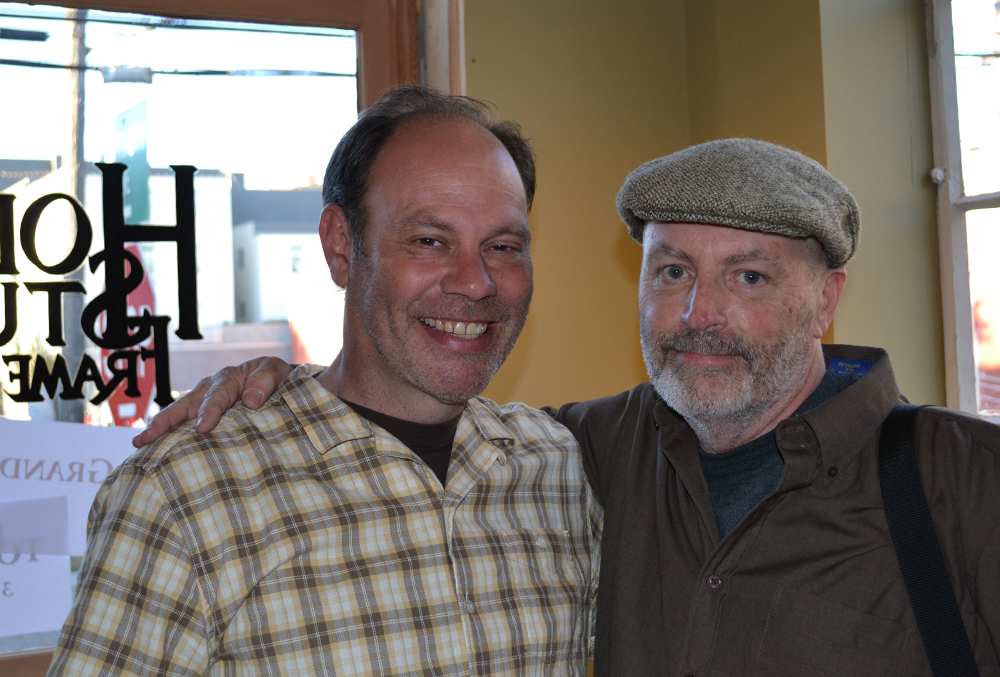Today at the Gallery we added the finishing touches to our one-man show, Robert Flanary: Seeing All Together. Along with a great air of anticipation here, we enjoyed also a considerable amount of fond reflection. The show marks the beginning of our twenty-fifth year of representing Robert, and it’s been a collaboration we’ve loved—and are thrilled to celebrate with this exhibit.
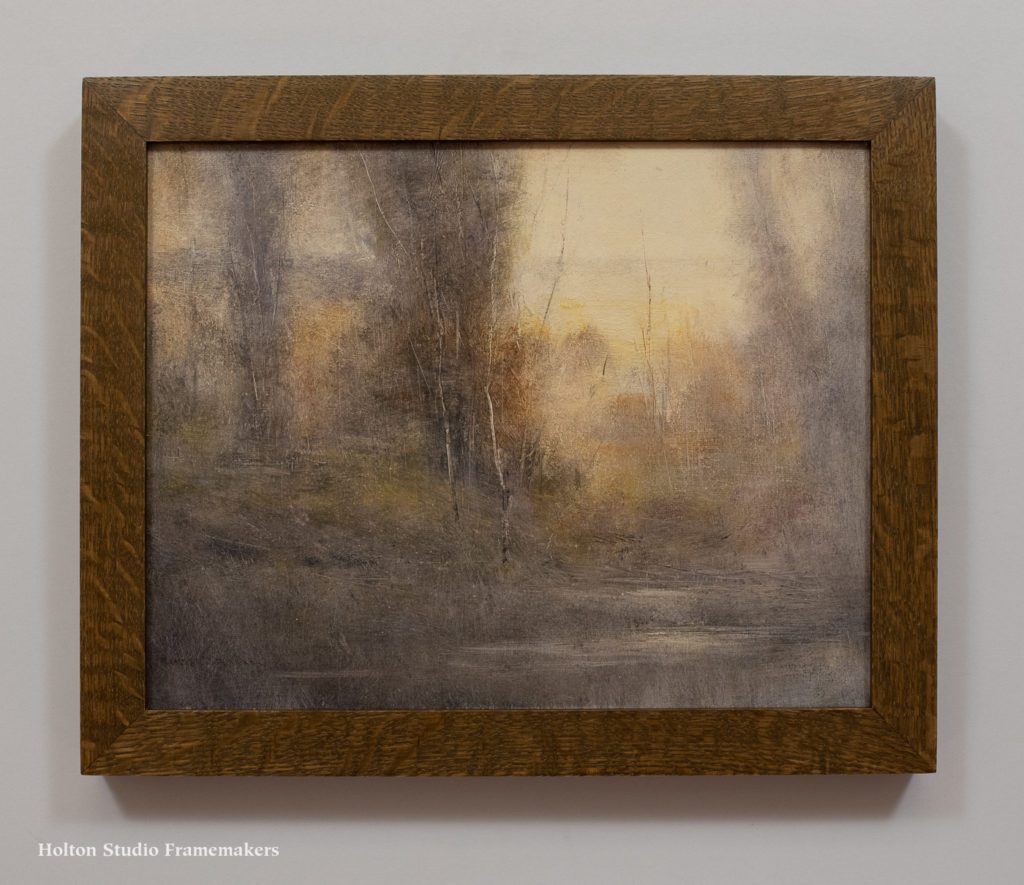
Robert Flanary
“Late Winter”
Oil on canvas, 11″ x 14″. $1,800 framed.
BUY
Robert Flanary’s paintings can be dangerous. I speak from personal experience. As I explained in my last post, 24 years ago Robert, visiting from Spokane, Washington, showed up at our little shop in Emeryville looking for picture frames for his landscape oil paintings. Gazing at the work, I was so enchanted that the next thing I knew, instead of selling Robert frames, as he’d asked me to do, I asked him if he would like to leave his paintings behind for us to display in the shop, framed by us at no expense to him. In other words, under the spell of Robert’s paintings, I got lost, and—because the arrangement would evolve to become the model for The Holton Studio Gallery—accidentally strayed into the gallery business.
And it’s not just me. A Flanary painting posted on social media recently received the comment, “My God, what is Robert Flanary doing to us!” Good question—what is he doing to us?
While it can be said that good painters paint the light—not the tree, the barn, the creek, but the light on the tree, the barn, the creek—few paint the light on the air as convincingly as Robert. Perhaps more than any other aspect of his work, it’s the heightened attention to atmosphere that seems to fascinate. Among other things, it’s that ephemeral and all-pervasive element that unifies and harmonizes the infinite variety of the natural landscape and fills us with the revelatory sense of “seeing all together,” as Robert puts it.
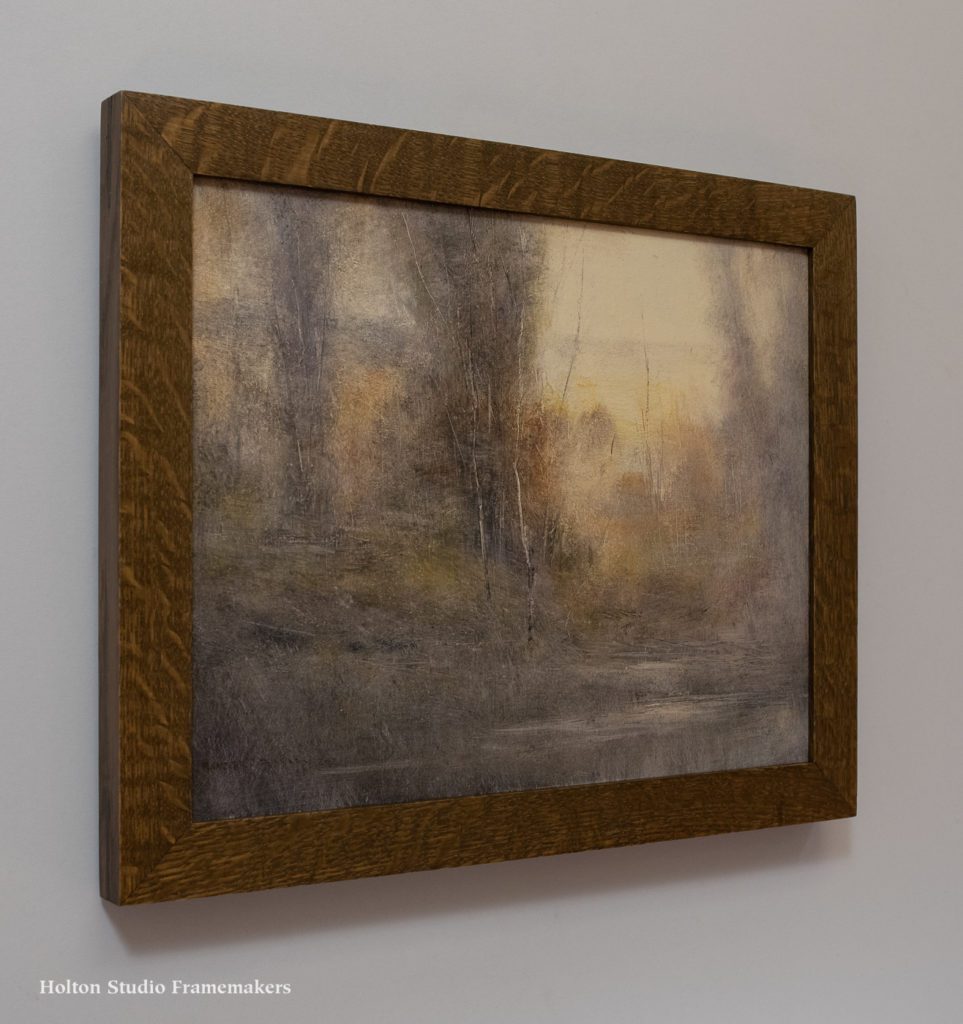
“Late Winter”. Side View
But as demonstrated by a painting like “Late Winter,” shown here, it’s not the rendering of atmosphere alone that makes Robert’s works so intoxicating. It’s the combination of that element with the artist’s mastery of perspective that I believe is the key to his extraordinary power to convey mood. Robert’s paintings confirm what neuroscientists have come to understand, which is that looking is never purely visual, but involves all the senses, including the kinesthetic sense—the whole body in motion. With powerful use of perspective, Robert draws, not just our eyes but our bodies into a scene, where his expertly captured atmosphere then envelopes us like music… And he’s done it to us again: we’re lost in another of Robert’s mysterious places.
But only to find ourselves. We’re not only seeing all together; we’re seeing that we are part of it all.
Come join us tomorrow, Saturday from 1-4, at the opening and artist reception for Robert Flanary: Seeing All Together.
The show can also be viewed online at our e-commerce site, here.
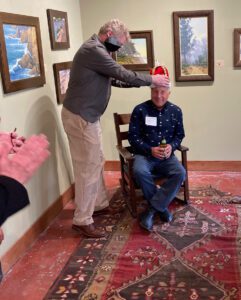 Despite a bit of rain and competition from a certain copy cat event in the UK, here at the gallery we had a lively time for the opening of “View Through the Trees,” celebrating Paul and his impressive body of work—thirty-six exemplary landscape paintings plus two wildlife pieces filling both galleries. We’re awfully proud of our twenty years representing this member of California landscape painting royalty!
Despite a bit of rain and competition from a certain copy cat event in the UK, here at the gallery we had a lively time for the opening of “View Through the Trees,” celebrating Paul and his impressive body of work—thirty-six exemplary landscape paintings plus two wildlife pieces filling both galleries. We’re awfully proud of our twenty years representing this member of California landscape painting royalty!